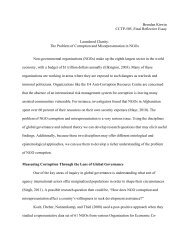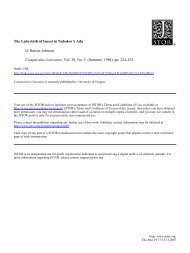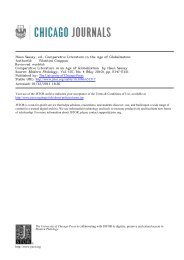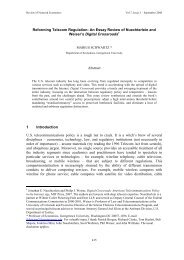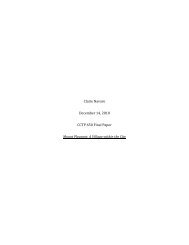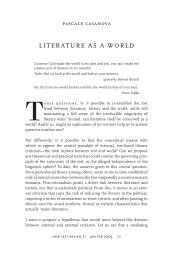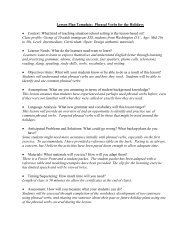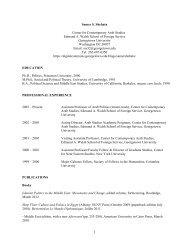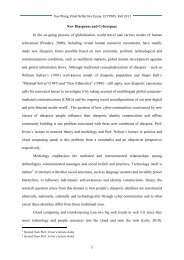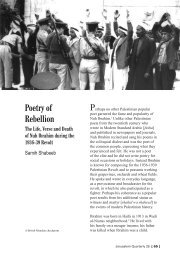Brand Tone of Voice:
Brand Tone of Voice:
Brand Tone of Voice:
- No tags were found...
You also want an ePaper? Increase the reach of your titles
YUMPU automatically turns print PDFs into web optimized ePapers that Google loves.
12 brand tone <strong>of</strong> voicecommunicating a personality that is accessible and liked by consumers, theclarity <strong>of</strong> the language chosen is not the only concern.3 Linguistic analysis <strong>of</strong> brand positionsIn this section, I apply some linguistic frameworks with a view to elucidatinghow far the language <strong>of</strong> the two brands is different, and whether this communicateseach position as more ‘tangible’ or more ‘intangible’.There are many possible analytical frameworks to apply, but I have selectedfour which have already borne fruit as a means <strong>of</strong> analysis <strong>of</strong> other genres andwhich appeared intuitively likely to reveal something <strong>of</strong> interest in the documents<strong>of</strong> study. These are:1. Chains <strong>of</strong> reference, examining how references to the brand and closelyassociated elements are made throughout the text (cf. Halliday & Hasan,1976; Prince, 1981; Cook, 2001);2. Participant roles, examining how the brand, its services, providers andaudiences are ‘positioned’ in relation to one another through the grammar<strong>of</strong> the clause (cf. Halliday, 1994; Thompson, 1996; Fairclough, 1989;Clark, 1992; Delin, 2000);3. Presupposition and assumption, looking further at how audiences arepositioned in relationship to the brand through the kinds <strong>of</strong> implicitassumptions that are made about participants (cf. Vestergaard &Schroder, 1985; Fairclough, 1989; Delin, 2000; Cook, 2001);4. Tenor, looking at how social relationships are assumed or constructedthrough the texts by means <strong>of</strong> markers <strong>of</strong> social distance such as formalityor informality (cf. Halliday & Hasan, 1989; Myers, 1994; Goodman &Graddol, 1996; Fairclough, 1992);In what follows, we will look at these approaches in turn, showing what eachreveals about the way language is being used by Orange and HSBC and itspossible relationship with the position <strong>of</strong> each brand.3.1 Chains <strong>of</strong> referenceThe first linguistic tool examines chains <strong>of</strong> reference in the text to see how thebrand and concepts related to it are evoked and kept activated in the mind<strong>of</strong> the hearer/reader. The examination <strong>of</strong> chains <strong>of</strong> reference has long been afoundational means <strong>of</strong> description <strong>of</strong> text cohesion (see in particular Halliday& Hasan, 1976; Halliday, 1994: 310) and has also been discussed by Cook (2001:151) in relation to advertising texts.



